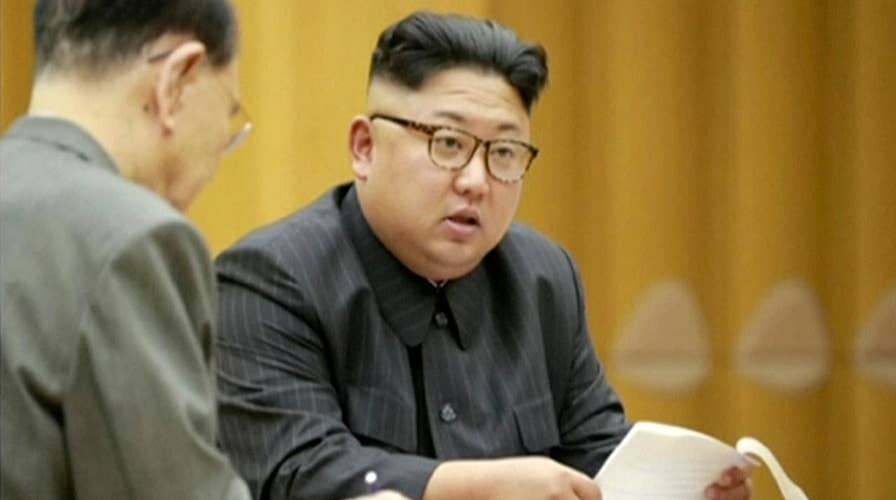US drafting new sanctions to isolate North Korea
Rich Edson reports on the State Department's reaction North Korea's claim of a nuclear test
North Korea on Sunday said that it has tested a hydrogen bomb.
The claim of a successful test prompted response from world leaders, among them President Trump.
North Korea’s “words and actions continue to be very hostile and dangerous to the United States,” he tweeted on Sunday in a series of posts.
Hydrogen bombs, also known as thermonuclear weapons, work differently from atomic bombs. Here is what you should know:
Atomic bombs
Atomic bombs involve what's known as fission. Neutrons in the nucleus -- the center of an atom -- are split and may strike other atoms’ nuclei, breaking them up, LiveScience explains online.
The U.S. famously dropped atomic bombs on the Japanese cities of Hiroshima and Nagasaki during WWII.
Hydrogen bombs
These bombs involve both fission and another process, called fusion.
Fusion is the main principle behind hydrogen bombs, which can be hundreds of times more powerful than atomic bombs.
In a hydrogen bomb, radiation from a nuclear fission explosion sets off a fusion reaction responsible for a powerful blast and radioactivity.
The U.S. and four other countries -- China, France, Russia, and the U.K. -- have all previously tested hydrogen weapons, the Washington Post reported.
What do we know about the recent test?
It was carried out at 12:29 p.m. local time at the Punggye-ri site where North Korea has conducted past nuclear tests.
Officials in Seoul put the magnitude at 5.7; the U.S. Geological Survey said it was a magnitude 6.3. The strongest artificial quake from previous tests was a magnitude 5.3.
The simple power of the blast was convincing. Japan's Defense Minister Itsunori Onodera said it might have been as powerful as 70 kilotons. North Korea's previous largest was thought to be anywhere from 10 to 30 kilotons.
“We cannot deny it was an H-bomb test,” Onodera said.
The Associated Press contributed to this report.

